California is one the largest producers of melons in the U.S., and melons most commonly grown in California are cantaloupes and honeydew types. Although some acreage is reported throughout the state, most are grown in the Southern desert valleys and San Joaquin Valley. Root-knot nematodes (RKN), Meloidogyne spp., are the most significant plant parasitic nematodes affecting melon production in California, especially in light-texture soils. The nematodes are widespread in Central and Southern California.
Damage results from feeding of second stage juveniles (J2) inside melon roots, and the roots respond to nematode invasion by formation of root galls. Nematode-infested plants become stunted and less vigorous with severe galling of roots. Deformed roots due to galls are unable to sustain the water and nutrient needs of the plant in hot weather, leading to wilting and poor growth of plants, reduced yield and poor fruit quality. Nematode-infested plants may also become more vulnerable to other soilborne pathogens.
Currently, there are no resistant cultivars in melons, and RKN management has mainly relied on the use of preplant soil fumigants and soil-applied nematicides. Management with these products is expensive and involves safety and environmental risks. New fumigant regulations by the Department of Pesticide Regulations (DPR) have been put in place to restrict the emissions of volatile organic compounds from the use of soil fumigants. These regulations include limits on the amount of soil fumigants a grower is allowed to use in a year, caps on the amounts allowed within a township and new expanded buffer zones, meaning large parts of a field may not be treated all. These new regulations by DPR may mean that there will be some fields not treated for nematodes because of caps placed on the amount a grower is allowed to use or caps on the amount of fumigants allowed in a township.
Alternative control options that have high efficacy, are economically viable and environmentally safe need to be evaluated under field situations. The goal of this project was to evaluate the efficacy of Salibro, an organic product and a developmental product (DP1) in comparison to Nimitz (fluensulfone) in melons applied through deep-buried drip tube. Nimitz is registered on melons in California.
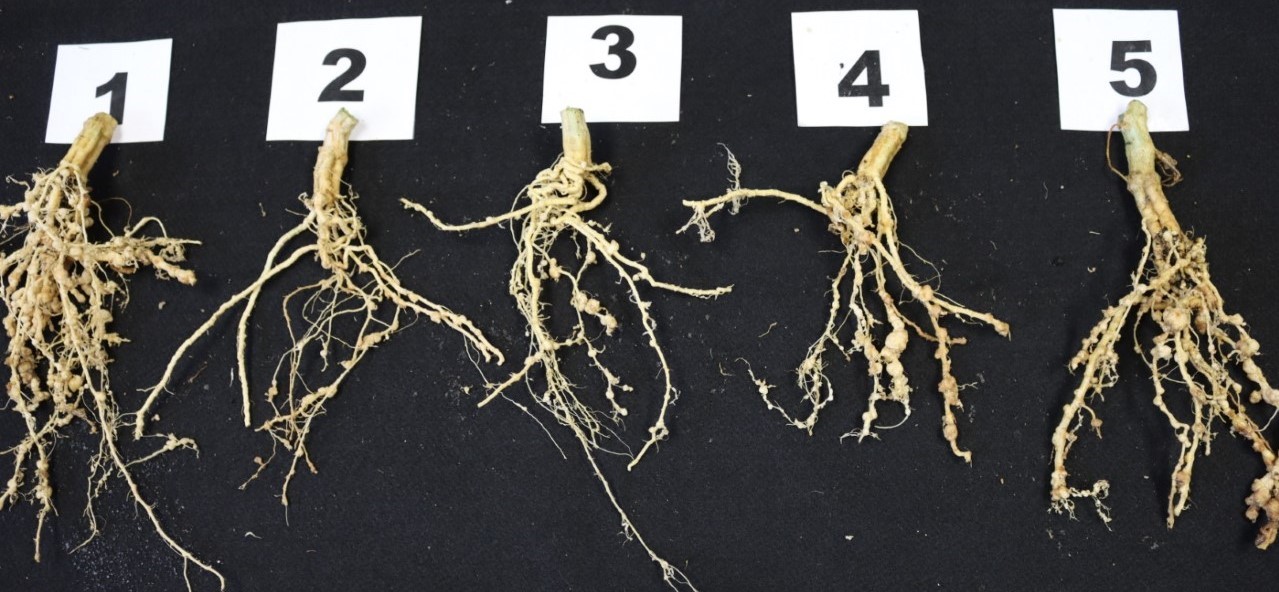
2020 Field Trial
This study was conducted as a small plot field trial on our RKN-infested site at the Shafter research farm. A western shipper-type melon variety, ‘Durango’, was hand transplanted onto 60-inch beds on June 30, 2020. There were four replications and five treatments in this trial arranged in a randomized block design. Rates, timings and method of application for each treatment is listed in Table 1, on page 18. Each plot was 20 feet in length with a five-foot buffer between plots along the bed. Treatments were applied either as a pre-plant or post-plant application through buried drip. Before chemigation, water was run for ten minutes to ensure all treatment tubing was filled, and after, chemigation water was run for about 20 minutes to flush the lines. The plots were irrigated using a surface drip and maintained using standard agronomic practices.

Before applying the treatments, soil samples were collected from all plots using a sampling tube at a depth of eight to 10 inches and submitted for analysis to determine the RKN count. Soil samples were collected and analyzed for nematodes again at harvest. Melon roots were evaluated for galling at mid-season and at harvest. Data on nematode counts and root galling was analyzed using SAS (statistical analysis software).
Data and Results
Plant vigor for each plot was rated visually on August 11, 2020 on a scale of 1-5, with 1=worse and 5=best plants. Vigor included the size of the vines and general appearance or health of plants. On the same day, five plants from each plot were randomly selected and visually rated for severity of root galling on a scale of 0-10; (0=no galls, 10=completely galled roots). The average galling on these five plants was used to give a galling index for each plot. The fresh shoot weights of these plants (without fruits) were determined.
At harvest on September 22, 2020, soil samples were collected from each plot for RKN count. All plants in each plot were dug and the severity of root galls on these plants was visually rated on a scale of 0-10 (0=no galls, 10=completely galled roots). The average of the galling on these plants in each plot was used to give a galling index for each plot.
Plant Vigor
No obvious differences were observed in plant vigor among treatments (Table 2). Some plots were a little more vigorous than others, but these differences were not attributed to treatment effect.

There were no significant differences observed in fresh shoot weight of melon plants during mid-season evaluation on August 11 (Table 3). However, Nimitz resulted in higher shoot weights than the other treatments.

Root Galling
The severity of root galling was assessed at mid-season and at harvest. At mid-season evaluations, root galling was moderate and ranged between 2.4 in the Nimitz treatment and 4.6 in the untreated control (Table 4). Root galling in Nimitz and Gropro treatments was significantly lower than the other treatments. At harvest, there was a little increment in root galling across all treatments, however there were no significant differences among treatments. Surprisingly, Salibro and the developmental product was not beneficial in the trial and had higher root gall ratings than the non-treated control plots at harvest.

Conclusion
In our 2020 trial, there were some treatment effects on mid-season root galling with Nimitz and the organic product Gropro having statistically lower root galling index compared to other products. However, none of the treatments were significantly different at harvest, and the results indicate that none of the treatments had a long-lasting effect on RKN levels in the soil. Therefore, further evaluations are needed to better determine the efficacy of these products as sole treatments and in combination with other products and their potential and continued use by the melon industry.
This project was funded by the California Melon Research Board.


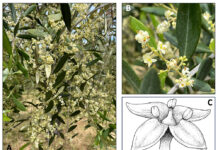
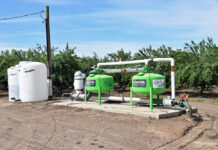
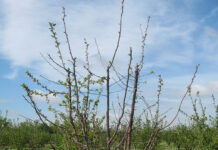
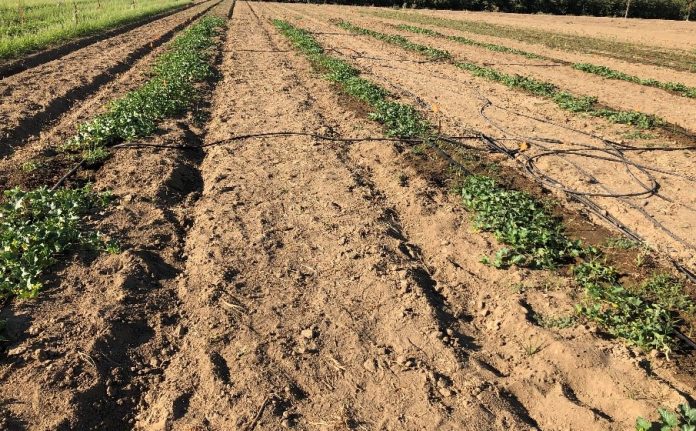









Thank you for your sharing. I am worried that I lack creative ideas. It is your article that makes me full of hope. Thank you. But, I have a question, can you help me? https://www.binance.info/bg/join?ref=P9L9FQKY